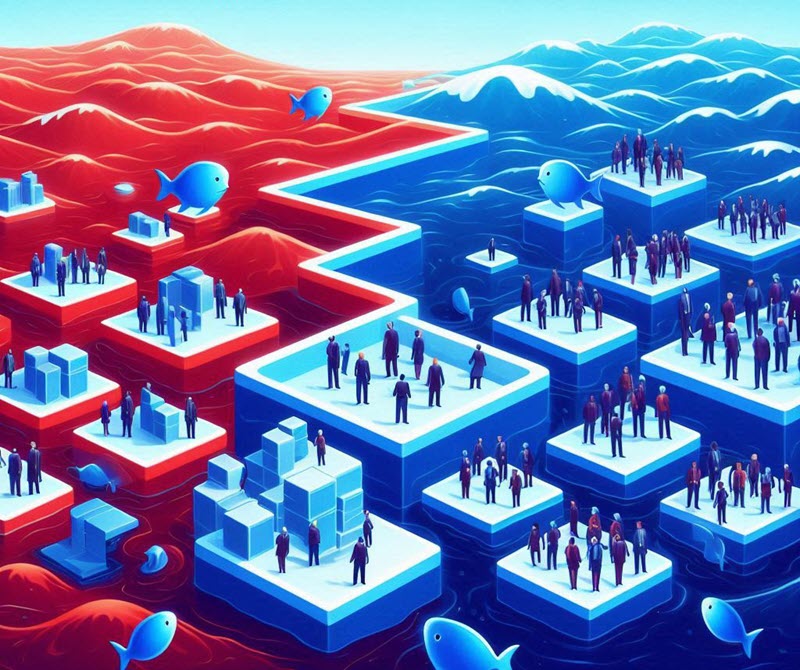
Mastering the Software Development Landscape: Navigating Red and Blue Oceans
Last updated: October 22, 2024 Read in fullscreen view
- 10 Apr 2022
 Agile self-organizing teams: What are they? How do they work? 28/435
Agile self-organizing teams: What are they? How do they work? 28/435 - 18 Oct 2020
 How to use the "Knowns" and "Unknowns" technique to manage assumptions 21/989
How to use the "Knowns" and "Unknowns" technique to manage assumptions 21/989 - 05 Aug 2024
 Debunking 10 Myths About Change Management 19/266
Debunking 10 Myths About Change Management 19/266 - 05 Oct 2025
 The New Facebook Algorithm: A Paradigm Shift in Content Discovery 19/46
The New Facebook Algorithm: A Paradigm Shift in Content Discovery 19/46 - 21 May 2022
 "Fail Fast, Fail Often, Fail Forward" is the answer to Agile practices of software success 18/941
"Fail Fast, Fail Often, Fail Forward" is the answer to Agile practices of software success 18/941 - 01 Oct 2020
 Fail fast, learn faster with Agile methodology 13/973
Fail fast, learn faster with Agile methodology 13/973 - 03 Nov 2023
 Why Is Billable Viable Product An Alternative To Minimum Viable Product? 12/165
Why Is Billable Viable Product An Alternative To Minimum Viable Product? 12/165 - 18 Jul 2024
 The 8 Best ways to Innovate your SAAS Business Model in 2024 8/204
The 8 Best ways to Innovate your SAAS Business Model in 2024 8/204 - 30 Jul 2024
 The Future of IT Consulting: Trends and Opportunities 8/131
The Future of IT Consulting: Trends and Opportunities 8/131 - 19 Oct 2021
 Is gold plating good or bad in project management? 7/754
Is gold plating good or bad in project management? 7/754 - 10 Nov 2022
 Poor Code Indicators and How to Improve Your Code? 7/213
Poor Code Indicators and How to Improve Your Code? 7/213 - 06 Feb 2021
 Why fail fast and learn fast? 6/375
Why fail fast and learn fast? 6/375 - 01 Mar 2023
 Bug Prioritization - What are the 5 levels of priority? 6/207
Bug Prioritization - What are the 5 levels of priority? 6/207 - 27 Jul 2024
 Positive Psychology in the Digital Age: Future Directions and Technologies 6/337
Positive Psychology in the Digital Age: Future Directions and Technologies 6/337 - 11 Oct 2022
 Why choose Billable Viable Product (BVP) over Minimum Viable Product (MVP) 5/315
Why choose Billable Viable Product (BVP) over Minimum Viable Product (MVP) 5/315 - 20 Nov 2022
 Agile working method in software and football 5/323
Agile working method in software and football 5/323 - 14 Oct 2021
 Advantages and Disadvantages of Time and Material Contract (T&M) 4/789
Advantages and Disadvantages of Time and Material Contract (T&M) 4/789 - 08 Oct 2022
 KPI - The New Leadership 3/557
KPI - The New Leadership 3/557 - 31 Oct 2021
 Tips to Fail Fast With Outsourcing 3/375
Tips to Fail Fast With Outsourcing 3/375 - 18 Aug 2022
 What are the consequences of poor requirements with software development projects? 3/242
What are the consequences of poor requirements with software development projects? 3/242 - 09 Oct 2024
 Short-Form Video Advertising: The Secret to Captivating Your Audience 3/107
Short-Form Video Advertising: The Secret to Captivating Your Audience 3/107 - 12 May 2024
 The Pros and Cons of the Creator Economy in the Age of AI: Opportunities, Challenges, and the Gray Zone with the Gig Economy 3/231
The Pros and Cons of the Creator Economy in the Age of AI: Opportunities, Challenges, and the Gray Zone with the Gig Economy 3/231 - 27 Feb 2025
 How AI Agents are Changing Software Development? 3/170
How AI Agents are Changing Software Development? 3/170 - 22 May 2025
 Role of Self-Service in CRM: Customer & Partner Portals for Automation 3/72
Role of Self-Service in CRM: Customer & Partner Portals for Automation 3/72 - 25 Jan 2025
 The Decline of Traditional SaaS and the Rise of AI-first Applications 2/73
The Decline of Traditional SaaS and the Rise of AI-first Applications 2/73 - 18 Aug 2024
 The Future of Web Development: Emerging Trends and Technologies Every Developer Should Know 2/173
The Future of Web Development: Emerging Trends and Technologies Every Developer Should Know 2/173 - 10 Sep 2024
 Leading Remote Teams in Hybrid Work Environments 2/125
Leading Remote Teams in Hybrid Work Environments 2/125 - 03 Jul 2022
 Manifesto for Agile Software Development 2/240
Manifesto for Agile Software Development 2/240 - 28 Dec 2021
 8 types of pricing models in software development outsourcing 2/417
8 types of pricing models in software development outsourcing 2/417 - 10 Dec 2023
 Pain points of User Acceptance Testing (UAT) 2/416
Pain points of User Acceptance Testing (UAT) 2/416 - 21 Dec 2023
 Top 12 Low-Code Platforms To Use in 2024 2/1147
Top 12 Low-Code Platforms To Use in 2024 2/1147 - 31 Dec 2022
 The New Normal for Software Development 2/343
The New Normal for Software Development 2/343 - 23 Sep 2021
 INFOGRAPHIC: Top 9 Software Outsourcing Mistakes 2/411
INFOGRAPHIC: Top 9 Software Outsourcing Mistakes 2/411 - 17 Feb 2022
 Prioritizing Software Requirements with Kano Analysis 2/280
Prioritizing Software Requirements with Kano Analysis 2/280 - 13 Dec 2020
 Move fast, fail fast, fail-safe 2/292
Move fast, fail fast, fail-safe 2/292 - 12 Oct 2020
 The Agile Manifesto - Principle #8 2/447
The Agile Manifesto - Principle #8 2/447 - 07 Oct 2020
 How To Manage Expectations at Work (and Why It's Important) 2/266
How To Manage Expectations at Work (and Why It's Important) 2/266 - 19 Apr 2021
 7 Most Common Time-Wasters For Software Development 1/525
7 Most Common Time-Wasters For Software Development 1/525 - 26 Dec 2023
 Improving Meeting Effectiveness Through the Six Thinking Hats 1/205
Improving Meeting Effectiveness Through the Six Thinking Hats 1/205 - 05 Jan 2024
 Easy ASANA tips & tricks for you and your team 1/180
Easy ASANA tips & tricks for you and your team 1/180 - 11 Jan 2024
 What are the Benefits and Limitations of Augmented Intelligence? 1/434
What are the Benefits and Limitations of Augmented Intelligence? 1/434 - 03 Jan 2024
 Why Partnership is important for Growth? 1/145
Why Partnership is important for Growth? 1/145 - 31 Dec 2022
 Future of Software Development Trends and Predictions for 2023 1/120
Future of Software Development Trends and Predictions for 2023 1/120 - 16 Aug 2022
 What is a Headless CMS? 1/225
What is a Headless CMS? 1/225 - 16 Sep 2022
 Examples Of Augmented Intelligence In Today’s Workplaces Shaping the Business as Usual 1/394
Examples Of Augmented Intelligence In Today’s Workplaces Shaping the Business as Usual 1/394 - 20 Feb 2025
 How Machine Learning is Shaping the Future of Digital Advertising 1/76
How Machine Learning is Shaping the Future of Digital Advertising 1/76 - 03 Oct 2021
 Five long-lasting trends in Chinese Marketing 1/345
Five long-lasting trends in Chinese Marketing 1/345 - 23 May 2024
 Mastering AI: Sharpening the Axe in the Digital Age 1/182
Mastering AI: Sharpening the Axe in the Digital Age 1/182 - 22 Nov 2024
 The Role of AI in Enhancing Business Efficiency and Decision-Making 1/154
The Role of AI in Enhancing Business Efficiency and Decision-Making 1/154 - 02 Dec 2024
 The Intersection of AI and Business Analytics: Key Concepts to Master in Your Business Analytics Course 1/252
The Intersection of AI and Business Analytics: Key Concepts to Master in Your Business Analytics Course 1/252 - 20 Aug 2025
 What Is Agentic AI? The Next Phase of Artificial Intelligence 1/96
What Is Agentic AI? The Next Phase of Artificial Intelligence 1/96 - 15 Aug 2025
 Quantum Technology: Global Challenges and Opportunities for Innovators /56
Quantum Technology: Global Challenges and Opportunities for Innovators /56 - 23 Jun 2025
 AI Avatars in the Metaverse: How Digital Beings Are Redefining Identity and Social Interaction /85
AI Avatars in the Metaverse: How Digital Beings Are Redefining Identity and Social Interaction /85 - 28 Nov 2023
 Scrum Team Failure — Scrum Anti-Patterns Taxonomy (3) /228
Scrum Team Failure — Scrum Anti-Patterns Taxonomy (3) /228 - 01 Mar 2022
 Why Does Scrum Fail in Large Companies? /243
Why Does Scrum Fail in Large Companies? /243 - 14 Mar 2024
 Why should you opt for software localization from a professional agency? /117
Why should you opt for software localization from a professional agency? /117 - 19 Dec 2023
 How AI is Transforming Software Development? /275
How AI is Transforming Software Development? /275 - 12 Mar 2024
 How do you create FOMO in software prospects? /127
How do you create FOMO in software prospects? /127 - 25 Sep 2024
 Enhancing Decision-Making Skills with an MBA: Data-Driven Approaches for Business Growth /177
Enhancing Decision-Making Skills with an MBA: Data-Driven Approaches for Business Growth /177 - 02 Oct 2022
 [Medium] The Importance of Being Able to Pivot /226
[Medium] The Importance of Being Able to Pivot /226 - 10 Sep 2024
 AI in Email Marketing: Personalization and Automation /154
AI in Email Marketing: Personalization and Automation /154 - 01 Aug 2024
 Red vs. Blue Oceans in Software Development /189
Red vs. Blue Oceans in Software Development /189 - 01 Jun 2022
 How Your Agile Development Team is Just Like a Football Team? /206
How Your Agile Development Team is Just Like a Football Team? /206 - 02 Nov 2022
 Frequently Asked Questions about Agile and Scrum /372
Frequently Asked Questions about Agile and Scrum /372 - 16 Jul 2022
 What are disadvantages of Agile Methodology? How to mitigate the disadvantages ? /353
What are disadvantages of Agile Methodology? How to mitigate the disadvantages ? /353 - 18 Jan 2024
 Self-healing code is the future of software development /200
Self-healing code is the future of software development /200 - 01 Dec 2022
 Difference between Set-based development and Point-based development /298
Difference between Set-based development and Point-based development /298 - 31 Dec 2023
 Software Development Outsourcing Trends to Watch Out for in 2024 /160
Software Development Outsourcing Trends to Watch Out for in 2024 /160 - 27 Oct 2020
 8 principles of Agile Testing /1195
8 principles of Agile Testing /1195 - 21 Oct 2022
 Virtual meeting - How does TIGO save cost, reduce complexity and improve quality by remote communication? /166
Virtual meeting - How does TIGO save cost, reduce complexity and improve quality by remote communication? /166 - 06 Nov 2019
 How to Access Software Project Size? /236
How to Access Software Project Size? /236 - 09 Oct 2022
 Key Advantages and Disadvantages of Agile Methodology /666
Key Advantages and Disadvantages of Agile Methodology /666 - 10 Oct 2022
 Should Your Business Go Agile? (Infographic) /107
Should Your Business Go Agile? (Infographic) /107
1. Understanding Red and Blue Oceans in Software Development
The world of software development is fiercely competitive, with new startups emerging daily. The concepts of Red Oceans and Blue Oceans, introduced by Chan Kim and Renée Mauborgne, offer valuable insights into market dynamics and strategies. Let’s explore how these metaphors apply to developers and entrepreneurs as they navigate this ever-changing landscape.
2. Red Oceans: Battling in Saturated Markets
Red Oceans represent saturated, highly competitive markets dominated by established brands. These spaces are marked by fierce competition where businesses fight over limited market share. Imagine trying to enter the social media market, dominated by giants like Facebook, Instagram, and Twitter. For newcomers, it’s like swimming with sharks – dangerous and often fatal.
In Red Oceans, companies must outperform competitors to gain a larger slice of the existing demand. This environment is particularly challenging for startups that lack the resources to go head-to-head with industry giants. Think of launching a new cola brand to compete with Coca-Cola and Pepsi – the odds of success are slim.
3. The Sour Spot in Red Oceans
The sour spot refers to the struggles faced by smaller players who attempt to enter these hyper-competitive markets. Even with a superior product, gaining traction is difficult. New entrants in the social media space, for instance, face the network effect – a product becomes more valuable as more people use it, making it hard for newcomers to persuade users to switch.
4. The Grey Zone in Red Oceans
The grey zone is a space where opportunities exist, but success is uncertain. Innovators may create new features, but they constantly face the risk of imitation. Take Snapchat’s disappearing content feature, for example. After Snapchat gained rapid popularity, Instagram quickly copied the feature with Instagram Stories, taking over the market. This demonstrates how larger competitors can neutralize the advantages of smaller players by replicating their innovations.
5. The Winner-Takes-All Challenge in Red Oceans
Red Oceans are often governed by a winner-takes-all principle, where the top competitors enjoy overwhelming advantages in resources, brand recognition, and economies of scale. In cloud computing, for example, AWS, Azure, and Google Cloud dominate, making it hard for smaller firms to secure a foothold without constant innovation and vigilance.
6. Blue Oceans: Exploring Untapped Opportunities
In contrast, Blue Oceans represent uncontested market spaces, free from intense competition. Here, businesses can create new demand instead of fighting over existing customers. Companies like Amazon, Netflix, and WhatsApp thrived by identifying unmet needs and creating value where there was none, rendering competition irrelevant, at least initially.
7. The Sweet Spot in Blue Oceans
The sweet spot in Blue Oceans is where a business finds a niche that no one else has tapped into. DuckDuckGo, for instance, carved out its space in the search engine market by focusing on privacy – something Google couldn’t easily offer without compromising its core revenue model. This allowed DuckDuckGo to address a market segment overlooked by the bigger players.
8. Strategies for Navigating Blue Oceans
If you aim to explore Blue Oceans, several strategies can help:
- Identify unmet needs: Conduct research to discover gaps in the market. What problems are current offerings failing to solve?
- Leverage emerging technologies: Apply new technologies in innovative ways to solve existing problems.
- Focus on value innovation: Instead of competing on the same features, offer a unique value proposition that makes competition irrelevant.
- Think beyond features: Consider the broader user experience, as DuckDuckGo did with its focus on privacy, rather than just search accuracy.
- Anticipate future needs: Position your product to meet evolving user demands before competitors can.
9. The Grey Zone and Sweet Spot in Blue Oceans
In Blue Oceans, the grey zone may involve untested technologies or unproven markets. It’s essential to consider why other companies haven’t already captured this space. If structural constraints prevent big players from entering (such as privacy conflicts for Google), then you may be on to a sustainable opportunity. However, be prepared – your success might eventually attract competitors.
The sweet spot occurs when you strike the right balance: a novel solution that meets an unaddressed need, capitalizing on technologies and trends that are just emerging.
10. The Dynamic Interplay Between Red and Blue Oceans
The distinction between Red and Blue Oceans isn’t always clear. What starts as a Blue Ocean can quickly turn red as competitors rush in. Conversely, innovation within Red Oceans can sometimes create new Blue Ocean opportunities.
Successful companies know how to adapt and thrive in both environments. This might include:
- Diversification: Expanding into related markets or offering complementary products.
- Continuous innovation: Regularly enhancing products to stay ahead of the competition.
- Strategic partnerships: Forming alliances to deliver unique value propositions.
- Niche focus: Targeting specific market segments that larger competitors may overlook.
11. Conclusion: Navigating Red and Blue Oceans in Software Development
In software development, success requires understanding both Red Oceans and Blue Oceans. Startups are drawn to Blue Oceans because of the promise of untapped markets and minimal competition. By identifying unmet needs and leveraging new technologies, businesses can create entirely new demand without going head-to-head with industry giants.
For established companies, balancing between defending their position in Red Oceans and exploring new Blue Oceans is critical for long-term sustainability. Companies must continuously innovate, stay customer-focused, and remain agile.
As you embark on your next software project, think carefully: Will you fight the competition in a saturated market, or venture into uncharted territory? Whichever path you choose, success comes to those who are willing to explore and adapt to changing landscapes. There’s always room for innovation – for those brave enough to find it.






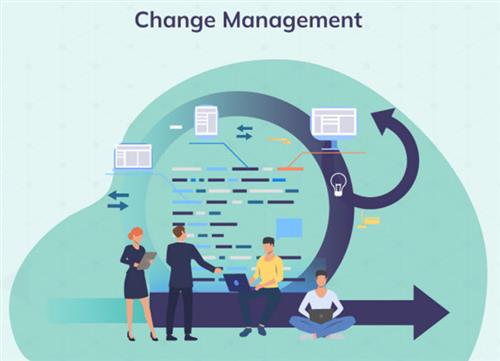

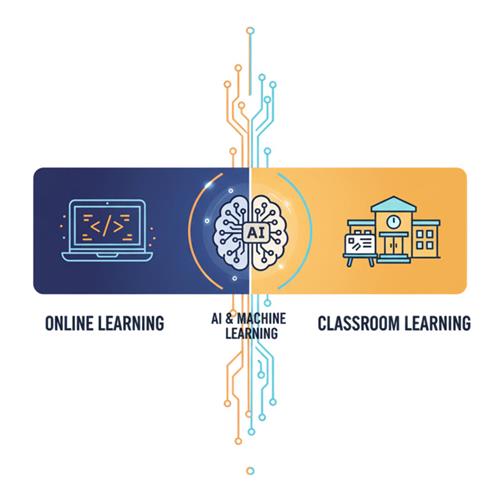

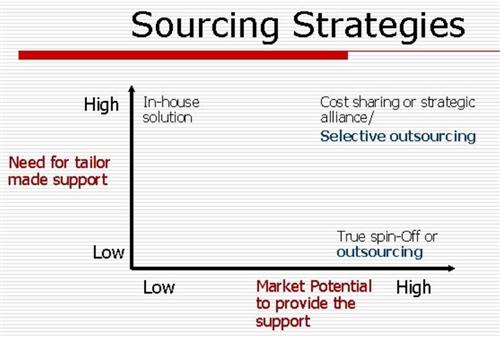




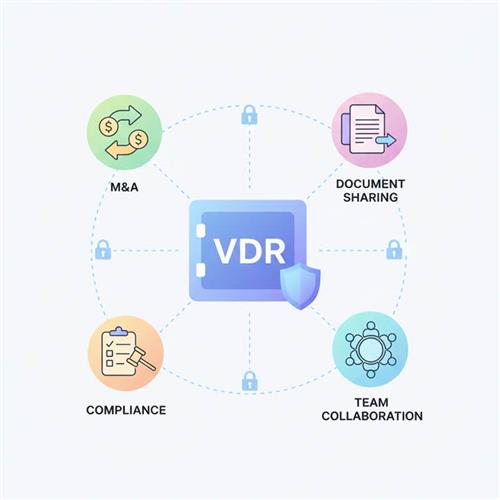








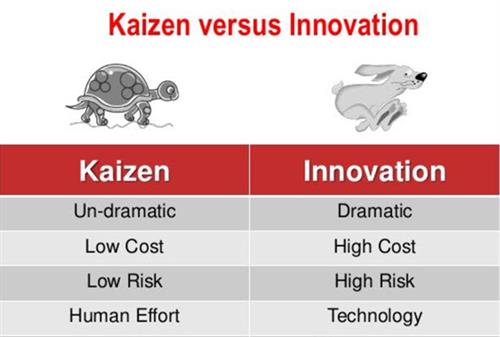









 Link copied!
Link copied!
 Recently Updated News
Recently Updated News